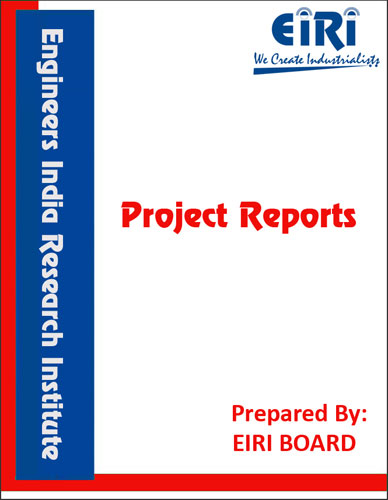The project report includes Present Market Position and Expected Future Demand, Market Size, Statistics, Trends, SWOT Analysis and Forecasts. Report provides a comprehensive analysis from industry covering detailed reporting and evaluates the position of the industry by providing insights to the SWOT analysis of the industry.
Curcumin (synonyms: turmeric yellow, kurkum, INS No. 100(i)) is an orange-yellow crystalline powder. Minor amounts of oils and resins naturally occurring in turmeric may be present.
The origin of the plant Curcuma longa L., which belongs to Zingiberaceae family is India. The plant is distributed throughout tropical and subtropical regions of the world, being widely cultivated in southeast Asian countries. Turmeric, i.e., the ground rhizomes of Curcuma longa L., has a long history of use in food as a spice, mainly as an ingredient in many varieties of curry powders and sauces, where curcumin from turmeric is a main colouring substance.
The turmeric (Curcuma longa) plant, a perennial herb belonging to the ginger family, is cultivated extensively in south and southeast tropical Asia. The rhizome of this plant is also referred to as the ―root and is the most useful part of the plant for culinary and medicinal purposes. The most active component of turmeric is curcumin, which makes up 2 to 5% of the spice. The characteristic yellow color of turmeric is due to the curcuminoids, first isolated by Vogel in 1842. Curcumin is an orange–yellow crystalline powder practically insoluble in water. The structure of curcumin (C 21 H 20 O 6) was first described in 1910 by Lampe and Milobedeska and shown to be diferuloylmethane. Turmeric is used as a dietary spice, coloring agent in foods and textiles, and a treatment for a wide variety of ailments. It is widely used in traditional Indian medicine to cure biliary disorders, anorexia, cough, diabetic wounds, hepatic disorders, rheumatism, and sinusitis. Turmeric paste in slaked lime is a popular home remedy for the treatment of inflammation and wounds. For centuries, curcumin has been consumed as a dietary spice at doses up to 100 mg/d. Extensive investigation over the last five decades has indicated that curcumin reduces blood cholesterol. (Aggarwal et al., 2006).
Turmeric was described as C. longa by Linnaeus and its taxonomic position is as follows:
Class Liliopsida
Subclass Commelinids
Order Zingiberales
Family Zingiberaceae
Genus Curcuma
Species Curcuma longa
The wild turmeric is called C. aromatica and the domestic species is called C. longa. For the last few decades, extensive work has been done to establish the biological activities and pharmacological actions of turmeric and its extracts. Curcumin (diferuloylmethane), the main yellow bioactive component of turmeric has been shown to have a wide spectrum of biological actions. These include its anti-inflammatory, antioxidant, anticarcinogenic, antimutagenic, anticoagulant, antifertility, antidiabetic, antibacterial, antifungal, antiprotozoal, antiviral, antifibrotic, antivenom, antiulcer, hypotensive and hypocholesteremic activities. Its anticancer effect is mainly mediated through induction of apoptosis. It’s anti-inflammatory, anticancer and antioxidant roles may be clinically exploited to control rheumatism, carcinogenesis and oxidative stress-related pathogenesis. Clinically, curcumin has already been used to reduce post-operative inflammation. Safety evaluation studies indicate that both turmeric and curcumin are well tolerated at a very high dose without any toxic effects. Thus, both turmeric and curcumin have the potential for the development of modern medicine for the treatment of various diseases.
Turmeric (Curcuma longa) is a native of Asia & India. The tuberous rhizone or underground steam of turmeric are used from antiquity as condiments. A dye and as an aromatic stimulants in several medicines. Turmeric is a very important spice in India, which produces nearly the whole world crop & uses 80% of it presently. It is cultivated in china, Taiwan, Indonesia, Sri Lanka, Australia, Africa, Peru & the West Indies. Turmeric uses dates back nearly 4000 years, to the vodic culture in India, when turmeric was the principal spice & also of religious significance. It is much reversed by thindus & associated with fertility. In to days India's, turmeric still added to nearly every dish be it meat or vegetables. Turmeric has been used in Indian systems of medicine for a long time.
INTRODUCTION
PRODUCT SPECIFICATION
USES AND APPLICATION
PROPERTIES OF CURCUMIN
CHEMICAL CHARACTERIZATION OF CURCUMIN
CURCUMIN – THE YELLOW EXTRACT FROM TURMERIC
CHEMICAL COMPOSITION OF TURMERIC
PHARMACOLOGICAL ACTION OF TURMERIC AND IT’S EXTRACT
FRAGRANCE AND FLAVOUR
RAW MATERIALS SCENARIO (INDIA AND GLOBAL)
OVERVIEW OF CURCUMIN MARKET
MARKET SURVEY
PRODUCTION OF CURCUMIN IN INDIA
CURCUMIN MARKET FORE CAST
PRESENT MANUFACTURERS OF CURCUMIN
PROCESS OUTLINE FOR CURCUMIN EXTRACTION
MANUFACTURING PROCESS OF CURCUMIN
BASIC PLANT AND MACHINERY REQUIRED.
SALIENT FEATURE OF THE PROCESS
MANUFACTURING PROCESS DIAGRAM
TECHNICAL DETAILS FOR CURCUMIN EXTRACTION
EXTRACTION AND PROCESSING OF CURCUMIN
SWOI ANALYSIS OF CURCUMIN
SUPPLIERS OF RAW MATERIAL (INDIAN)
SUPPLIERS OF RAW MATERIAL (GLOBAL)
SUPPLIERS OF PLANT AND MACHINRY
APPENDIX – A :
1. COST OF PLANT ECONOMICS
2. LAND & BUILDING
3. PLANT AND MACHINERY
4. FIXED CAPITAL INVESTMENT
5. RAW MATERIAL
6. SALARY AND WAGES
7. UTILITIES AND OVERHEADS
8. TOTAL WORKING CAPITAL
9. COST OF PRODUCTION
10. PROFITABILITY ANALYSIS
11. BREAK EVEN POINT
12. RESOURCES OF FINANCE
13. INTEREST CHART
14. DEPRECIATION CHART
15. CASH FLOW STATEMENT
16. PROJECTED BALANCE SHEET



